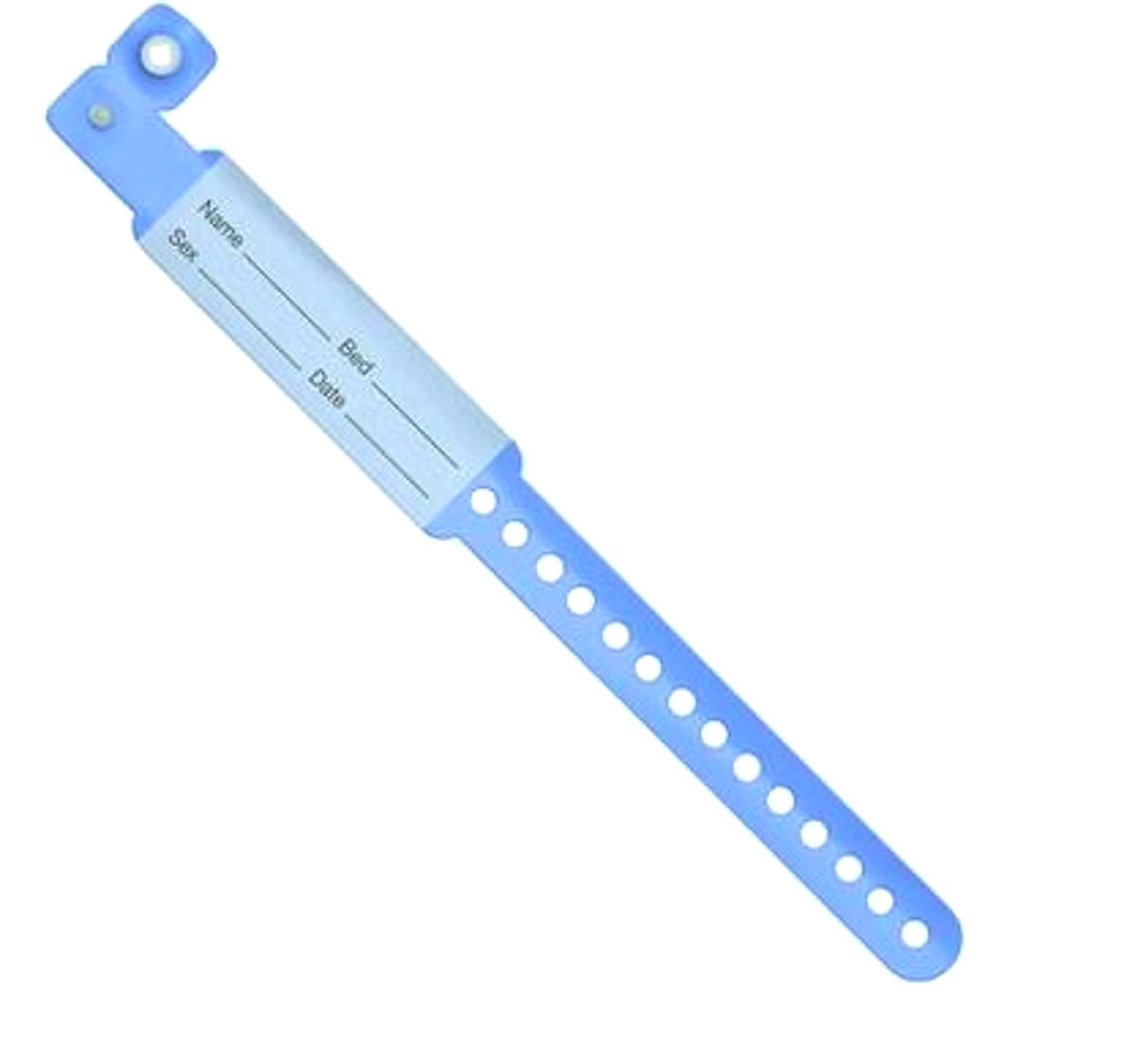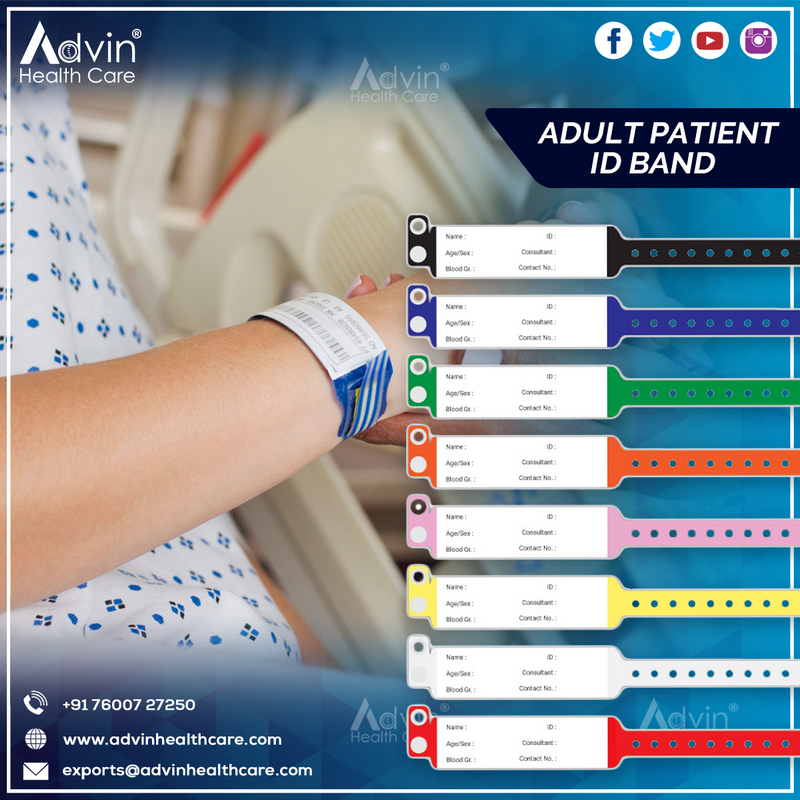The Purpose of Patient Identification Band in Optimizing Hospital Operations
A Comprehensive Guide to Patient Identification Band as a Vital Medical Supply
In the large landscape of medical care, Patient Identification bands have become a vital device (patient identification band). These bands, overflowing with crucial information, work as the first line of protection against medical errors and guarantee seamless Patient treatment. As we start to discover these medical materials comprehensive, we reveal the intricacies of their style, use, and influence on Patient safety, while hinting at the pledge they hold for future clinical practices
The Role of Patient Identification Bands in Medical Care
The importance of Patient Identification bands in healthcare can not be overemphasized. These basic wristbands offer as the main technique of making sure Patient identification, reducing the danger of medical errors and enhancing total Patient safety and security. Patient Identification bands supply a system of balances and checks, a fail-safe versus possible blunders, and a constant pointer of the private behind the treatment.
Translating the Information on Patient Identification Bands
While they might seem basic at a glimpse, Patient Identification bands carry vital info that can substantially affect the program of a client's treatment. These bands commonly present the Patient's name, date of birth, and a special identifier, such as a clinical document number. These essential items of information guarantee right Patient Identification, stopping clinical mistakes. Some bands may additionally consist of vital clinical alerts, such as allergy information, which can be important in stopping unfavorable responses. In addition, the barcode located on these bands can be checked to access the Patient's digital wellness record, supplying a wide range of info to doctor. Understanding the information on these bands is important for reliable and risk-free Patient care.
Various Kinds Of Patient Identification Bands: A Closer Appearance
In the realm of Patient Identification, there are numerous sorts of bands that offer distinctive functions. Barcode Identification Bands, RFID Tag-based Bands, and Color-Coded Patient Bands are the key classifications - patient identification band. Each type offers unique attributes and advantages, which will be examined in the following areas
Barcode Identification Bands
Supplying a substantial renovation in Patient safety and security, barcode Identification bands have come to be a crucial instrument in the clinical area. These bands store essential Patient information in a barcode layout that's swiftly accessible with a scan. This lowers the opportunity of human error in Patient Identification and information access, which is vital in medical treatments. The barcode system makes information like Patient name, clinical history, allergic reactions, and prescribed medications easily available. This makes sure right and quick Patient Identification, particularly in emergency situation circumstances where every second counts. Barcode Identification bands are additionally easy to use, affordable and sturdy, making them a vital part of modern health care. Notably, these bands have significantly minimized clinical errors and improved Patient security.
RFID Tag-based Bands
An additional innovative method in Patient Identification is the use of RFID Tag-based bands. These bands make use of Radio Regularity Identification (RFID) modern technology to provide a safe type of Patient Identification. In spite of these obstacles, RFID tags supply significant capacity for boosting Patient safety and security and effectiveness in medical care.
Color-Coded Patient Bands
Color-coded Patient bands stand as an easy yet effective tool in Patient Identification. These bands, prevalent in medical facilities and clinics, make use of various shades to suggest various Patient allergies, conditions or dangers, guaranteeing prompt recognition by healthcare experts. For circumstances, a red band normally signifies an allergy, while yellow indicates an autumn threat. These bands are developed to be distinct and easily noticeable, even in high-stress scenarios. This prompt visual cue permits timely, exact care, minimizing the potential for medical errors. It's essential that staff are thoroughly educated in the shade definitions, as confusion can lead to severe consequences. Hence, the color-coded Patient band system is a crucial part of browse around this site Patient safety and security and reliable healthcare delivery.

Usage of Patient Identification Bands: Procedures and Procedures
In medical care setups, the use of Patient Identification bands plays a pivotal duty in guaranteeing Patient safety and security and minimizing clinical mistakes (patient identification band). These bands, typically made of sturdy, hypoallergenic product, are attached to the Patient's wrist or ankle, displaying crucial info such as name, date of birth, and an unique identifier. In elderly care, two bands might be utilized for patients with mental deterioration to guarantee correct Identification.
The Effect of Identification Bands on Patient Safety And Security
Identification bands play a vital function in preserving Patient security in medical care setups. Their use can dramatically reduce clinical errors by ensuring that the right Patient receives the right treatment. These easy tools add to boosting the top quality of treatment by giving an added layer of confirmation to Patient identifications.
Reducing Clinical Mistakes
A staggering variety of clinical errors, estimated to be in the hundreds of thousands every year, can be traced back to misidentification of patients. These mistakes lead not only to harm to the Patient yet likewise result in pricey legal and reputational problems to the healthcare organization. Patient Identification bands have actually become a very useful device in dramatically reducing these mistakes. They provide a basic, yet efficient, method of properly identifying individuals. Most importantly, these bands make sure that every Patient is properly matched with their medical documents, tests, and treatments, therefore significantly minimizing the danger of medical mistakes. By guaranteeing accurate Patient Identification, these bands add to improved Patient safety, constructing depend on and confidence in the healthcare system.
Ensuring Proper Treatment
Protecting Patient safety, Identification bands play an essential duty in making sure the correct management of therapies. They offer an easy yet efficient technique for appropriately recognizing people and matching them to their clinical records. This minimizes the threat of treatment errors, especially in click here now high-pressure circumstances where errors can have severe effects. These bands have important details such as the Patient's name, day of birth, and one-of-a-kind Identification number. They promote accurate cross-referencing with electronic health documents, prescription orders, and step-by-step timetables. In repercussion, the opportunity of misdiagnosis, medicine mistakes, or step-by-step mix-ups is dramatically minimized. Essentially, Patient Identification bands function as a vital guard in the health care setting, considerably adding to Patient safety and security and making sure proper treatment.

Enhancing Quality Care
While they may show up irrelevant, patient Identification bands considerably improve the top quality of care given in medical care setups. They are a vital device in making certain Patient security due to their capability to supply immediate accessibility to essential info. The fostering of Patient Identification bands is, for that reason, a needed measure in all healthcare environments.
Checking out the Future of Patient Identification Bands in Clinical Method

Conclusion
Patient Identification bands play an essential role in find out here health care, guaranteeing accurate Patient Identification and lowering medical errors. These vital devices boost safety and security and supply prompt access to vital health information. The assimilation of digital and biometric technologies can better improve Patient security, treatment quality, and privacy. As medical methods remain to evolve, Patient Identification bands will continue to be a critical component of the healthcare system.
While they might seem basic at a glance, Patient Identification bands carry important information that can significantly affect the course of an individual's care.Color-coded Patient bands stand as a basic yet efficient tool in Patient Identification.In health care setups, the usage of Patient Identification bands plays an essential function in ensuring Patient safety and security and minimizing medical errors. In essence, Patient Identification bands serve as an important protect in the medical care setting, dramatically adding to Patient safety and ensuring appropriate therapy.
Patient Identification bands play an important role in medical care, ensuring exact Patient Identification and minimizing clinical errors.